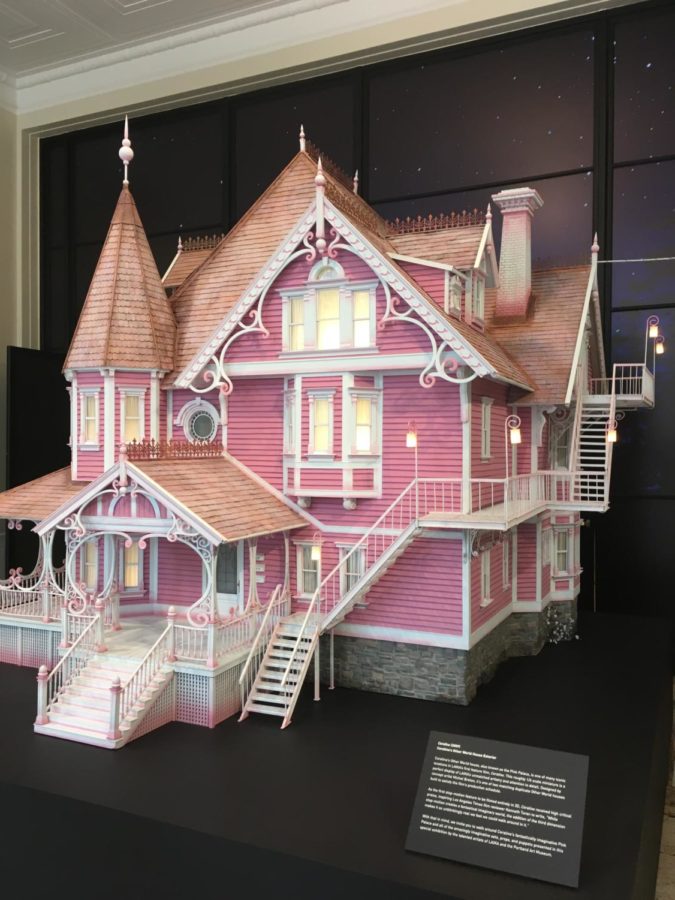Review: Local movie-making company featured at Portland Art Museum
Coraline’s house from the Laika exhibit at the Portland Art Museum
Laika Entertainment is a stop-motion animation company founded in 2005 in Oregon. Laika has four feature films, “Coraline” (2009), “ParaNorman” (2012), “The Boxtrolls” (2014) and “Kubo and the Two Strings” (2016).
In October, an exhibition about Laika opened at the Portland Art Museum. It will be there until May 20, 2018. This exhibit explores the making of Laika’s movies. It shows the many puppets and props used in the movies. Some of the sets, clothing and costumes are on display, all of it handmade.
An amazing aspect of Laika films is that they’re animated using stop-motion, which is the animating of physical figures frame by frame. Each puppet is handmade with adjustable arms and hands and 3D-printed removable faces. The puppet is moved by an animator, and a picture is taken. The animator moves the figure again, and another picture is taken. When the frames are put together, the viewer sees the figure move. Laika animates in 24 frames per second. For every second of film, 24 shots or frames are taken. It takes patience, hard work and up to five years to animate a movie.
One of the houses from “Coraline” is the first thing people see when they enter the exhibition. The detail and color and “real-ness” of the house is incredible.
In the next room, the first thing I noticed was a wall of faces of characters from all the Laika movies. Each row shows, frame by frame, characters saying one line of dialogue. There is also a giant 18-foot tall skeleton from “Kubo” in the room. To put the giant into perspective, four other characters from the movie are next to it, and they look like little bugs.
In the main room, sets from the movies, including the Fantastic Garden from “Coraline,” display the tremendous detail and effort it took to make each film. On both sides of the room, there are puppets of characters from each of the movies with information about them. The clothes and costumes are so small and intricate. Corduroys can be distinguished from jeans, and vests and suit jackets from leather coats.
Also in the exhibit were videos of crew members talking about making the movies. There was a room with big couches and a video that explained everything from reading the script to making puppets, creating faces and designing costumes.
Seeing the exhibit was inspiring because of all of the detail and elaborateness of the characters, costumes and sets. It may take a lot of work to make the movies, but it’s very rewarding for the audience.

